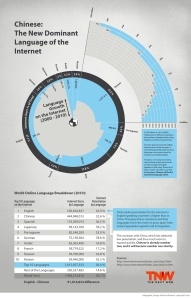Have you ever wondered how people in different countries use social media? Have you ever thought the impact of social media might not be as massive in Asia as in the States?
I had the fortune to meet with the EVP of Yaffe Group, Michael Morin, to discuss how people adopt social media in countries like Taiwan or China. As we chatted along, there are several insights I would like to share:
- Platforms & channels aren’t connected & integrated as much as those in the States.
Nowadays you probably have seen Facebook or Twitter icon popping up everywhere from print materials or TV commercials. As the rise of social media, marketers who are used to traditional channels have to learn how to embrace and utilize these new channels and start conversing with customers. In Asia, however, things are seemingly different: each communication channel is still exclusive in its own purpose and content. Take one of the largest BBS in Taiwan, PTT (telnet://ptt.cc), for example: the site currently hosts 150,215 visitors, with the diverse user coverage from current students to graduated alumni. The user number might be far less than that of major social media sites likes Facebook or Twitter. But imagine 90% of the universities have their own BBS , and almost every student is active in more than one forums on BBS, the power of this channel can easily be multiplied. However, companies and brands rarely get the chance to get into this channel and I believe part of the reason is topics discussed in BBS are students-oriented (whether being tips of certain classes or information about studying abroad). Information covered can still be broad enough for individuals but too narrow to get in for advertisers or marketers. In short, I think “localization” & “exclusiveness” are still very common phenomenon in many communication channels in Asian countries. And that is why they aren’t integrated with one another.
, and almost every student is active in more than one forums on BBS, the power of this channel can easily be multiplied. However, companies and brands rarely get the chance to get into this channel and I believe part of the reason is topics discussed in BBS are students-oriented (whether being tips of certain classes or information about studying abroad). Information covered can still be broad enough for individuals but too narrow to get in for advertisers or marketers. In short, I think “localization” & “exclusiveness” are still very common phenomenon in many communication channels in Asian countries. And that is why they aren’t integrated with one another.
- Branding & engagement is still an undefined expertise.
Many of advertisers or marketers in Taiwan or China might disagree with me on this, but in general, I do not believe local companies (whether as big as Foxconn or as small as mom-and-pop shops) understand what PR / marketing / advertisement is about. Let alone social media, branding, or engagement with customers. Yes, you might still see fancy TV commercials or shiny billboards in municipal cities like Taipei, Beijing, or Shanghai. But look more closely, the majority of brands advertised are global brands like Sony, Pepsi, or McDonald. You can get a glimpse of what I am talking about by this Top 10 Chinese New year TVCs (http://www.campaignasia.com/Article/246863,top-10-chinese-new-year-tvcs.aspx) and you can probably tell the difference of messages delivered in Asian countries (China, Taiwan, Singapore…etc) between those here. “Families and friends” are more emphasized in commercial messages (“exclusiveness”, echoing my second point above), and less focus on corporate images or brands. Creativity is another factor influencing how companies or brands portray themselves. According to Tim Broadbent, AdAgeChina, that “Ads are mainly used to convey product facts. They are more likely to show a demo of the product composition, together with multiple product messages. They are less likely to use humor or music, and, crucially, fewer appeal to the emotions. “
The usage of Internet and the number of people with higher purchasing power in Asian countries might be increasing, but to engage with customers with various social media channels, companies there still have a long way to go.





